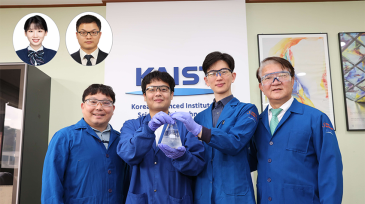R&D/innovation
Researchers are studying how excessive groundwater extraction is causing global and regional aquifer depletion and land subsidence.
AI is transforming oil and gas, but the real change will come from young professionals (YPs) who bridge technology and field expertise. By leading pilots, building networks, and challenging old assumptions, YPs can drive the industry’s digital transformation from within.
Researchers have developed a low-cost carbon capture technology called PICC that uses only water and pressure to remove nearly all CO2 from industrial exhaust, offering a simpler, cleaner, and more affordable alternative to traditional chemical methods.
-
Allison Taylor, SPE, is studying whether nanogels can improve how gas, specifically CO2, is stored underground during CO2 flooding operations.
-
The new facility was designed to enable advances in understanding subsurface processes through integrated geomechanics, fluid dynamics, and advanced reservoir characterization.
-
The 1-month project, led by UT Austin's Estibalitz Ukar, will pump CO2-rich water into a 400-m-deep well to test if magnesium-rich rocks at the test site can capture CO2 by turning it into stable minerals.
-
After a decade of research, the project boasts several achievements including drilling two test wells at depths below 9,800 ft, detailed geologic modeling and reservoir characterization, and multiple publications.
-
University of Colorado Boulder researchers will combine tools, such as power systems modeling, spatial statistics, and GIS mapping along with community forums, surveys, and interviews to capture both the human and technical sides of geothermal development.
-
The researchers found that adding nutrients such as nitrogen initially boosted soil carbon storage in previously tilled croplands and that these carbon gains persisted for decades even after fertilization and tilling stopped.
-
Emerson and HeroX are teaming up to award $60,000 in prize money to inventive thinkers who develop next-generation solutions to advance flow-measurement technology in critical industrial systems.
-
Assistant Professor Lori Tunstall received more than $1 million from the Gordon and Betty Moore Foundation to explore how municipal waste can be converted into biochar to replace cement in concrete.
-
This article introduces a tender strategy framework—a four-pillar model built on nearly 2 decades of international upstream experience—that integrates engineering rigor with business strategy to improve contract awards, strengthen transparency, and deliver lasting project performance.
-
Researchers at KAIST developed an integrated chemobiological platform that converts renewable feedstocks like glucose and glycerol into essential aromatic hydrocarbons (BTEX) using engineered E. coli strains and a solvent-integrated catalytic process, offering a sustainable alternative to petroleum-based production.
Page 1 of 4













